Collectible Curiosities – Curio Cabinets
PRIMITIVE - Friday, June 27, 2014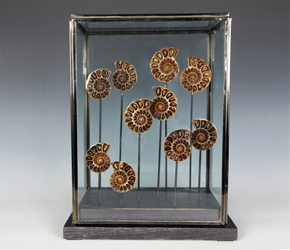 |
|
By Misaki Imagawa
COPENHAGEN, 1646
Curiosity brought you here. Although it is rainy and there is a chill in the air, you came out anyway because you were compelled to act. The rickety carriage stops in front of a weathered stone building adjacent to a shadowed alleyway. This area is quiet, distanced from the rowdy market squares in the city center. The cobblestones are wet and treacherous after a recent rain, and the hay scattered across the road has become little more than grime. Eyeing the address, you climb three chipped steps and rap the brass knocker several times against the heavy door. A young man with a boyishly smooth face answers and beckons you inside. He takes your coat and placing it over his arm, says “the doctor will be right out.”
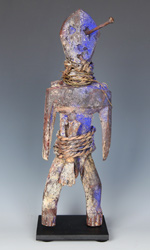 |
|
“Welcome,” says a man with a deep husky voice. “I am Doctor Wormius.” You turn to see the esteemed physician and antiquarian. He is dressed in a flowing, embroidered robe and has a long grey beard and a furrowed brow. Although he looks serious and stern, his demeanor is cordial. “Come,” he says, “I will share with you my latest curiosity. It arrived a fortnight ago on a ship from the new world.” You detect pride and enthusiasm in his voice as he leads you down a narrow hall and into a side room with two large leaded glass windows. Placing a box on a center table, he unties the rope closure and lifting the lid reveals what appears to be an absurdly small, miniature human skull. Cradling it in his hands he points out the ragged lines that run across the surface. The doctor runs his fingers over the strange marks. “How very curious,” he says, almost to himself.
If you really were in 17th century Copenhagen and had an interest in collecting curiosities, you almost certainly would have participated in this scene, probably on more than one occasion. Dr. Olaus Wormius, known to all as Dr. Ole Worm was not only a Danish physician, but one of the best known collectors of his time – a connoisseur and curator of a well known cabinet. “Curiosity cabinets” in those days referred to rooms filled with unusual artifacts that straddled the line between science and myth. Those curios included all forms of natural objects such as shells, minerals, fossils, animal and reptile specimens, plants and vegetation, and depictions of human deformities. World travelers and explorers frequently brought back samples of artifacts and wildlife from newly discovered, exotic lands. Ole Worm and other collectors studied the objects for educational purposes, often making scientific and medical breakthroughs in the process. In fact, the ossifications found on the human skull are now named Wormian bones after the good doctor.
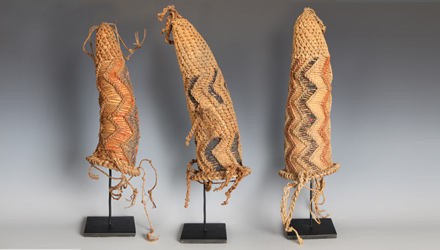 |
Over time, many private collections found their way into museums, and as science and technology advanced, the function of the curiosity cabinet began to change, even if the original concept did not. It remained a collection of mysterious and peculiar artifacts; but the main impetus for collecting was no longer scientific knowledge. Rather, the assembly of decorative collections was an end unto itself, and the most valuable collections were comprised of rare, uniquely presented, beautiful objects.
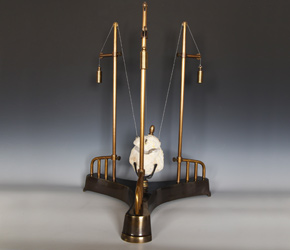 |
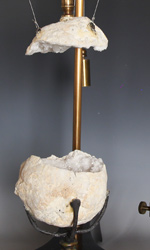 |
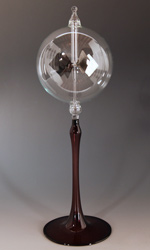 |
|
Just as there were no limitations on the objects collected long ago, there are no boundaries to the collection presented at PRIMITIVE today. The only requirement for PRIMITIVE’s Curiosity Cabinet is that the objects are authentic, exotic, and engaging in both subject matter and presentation. Some of the curiosities you’ll find at PRIMITIVE are fossils and minerals exquisitely mounted on handmade displays as well as Crooke’s radiometers, glass orbs featuring four small vanes that rotate when exposed to light. Departing from science and entering the world of the spiritual, part of the curiosity collection includes African fetishes enshrined in glass globes, their purpose still largely a mystery. Less mysterious, but no less fascinating, is sea life such as star fish and sea urchins mounted on sterling silver bases. Each and every piece draws you deep into the underwater world.
These brief descriptions may do little more than confuse you – then again, that’s what is intriguing about curiosities. They baffle us with the breadth of nature’s complexity and creativity, and they engage us with an unbridled sense of mystery. There is a saying: one look is worth more than a hundred explanations. It’s the same today as it was in the 17th century when Dr. Ole Worm received visitors and collectors alike. Just as before, curiosity may compel you to visit PRIMITIVE's cabinet in Chicago.
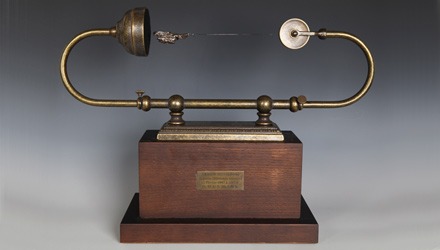
|
|
Download this Article: Collectible Curiosities.pdf